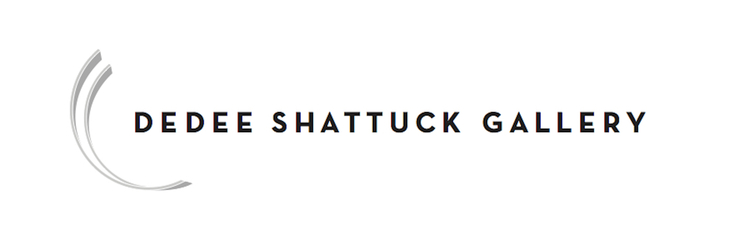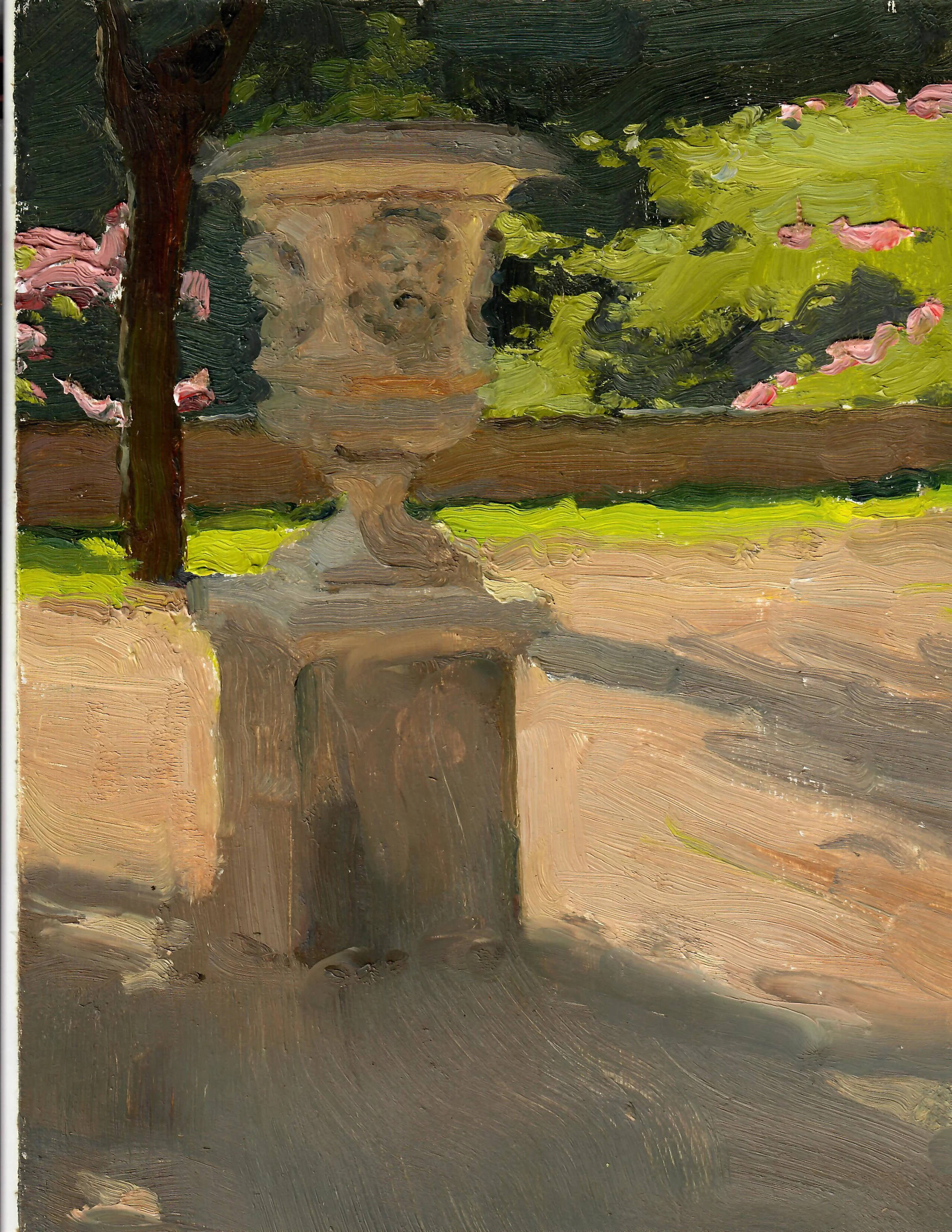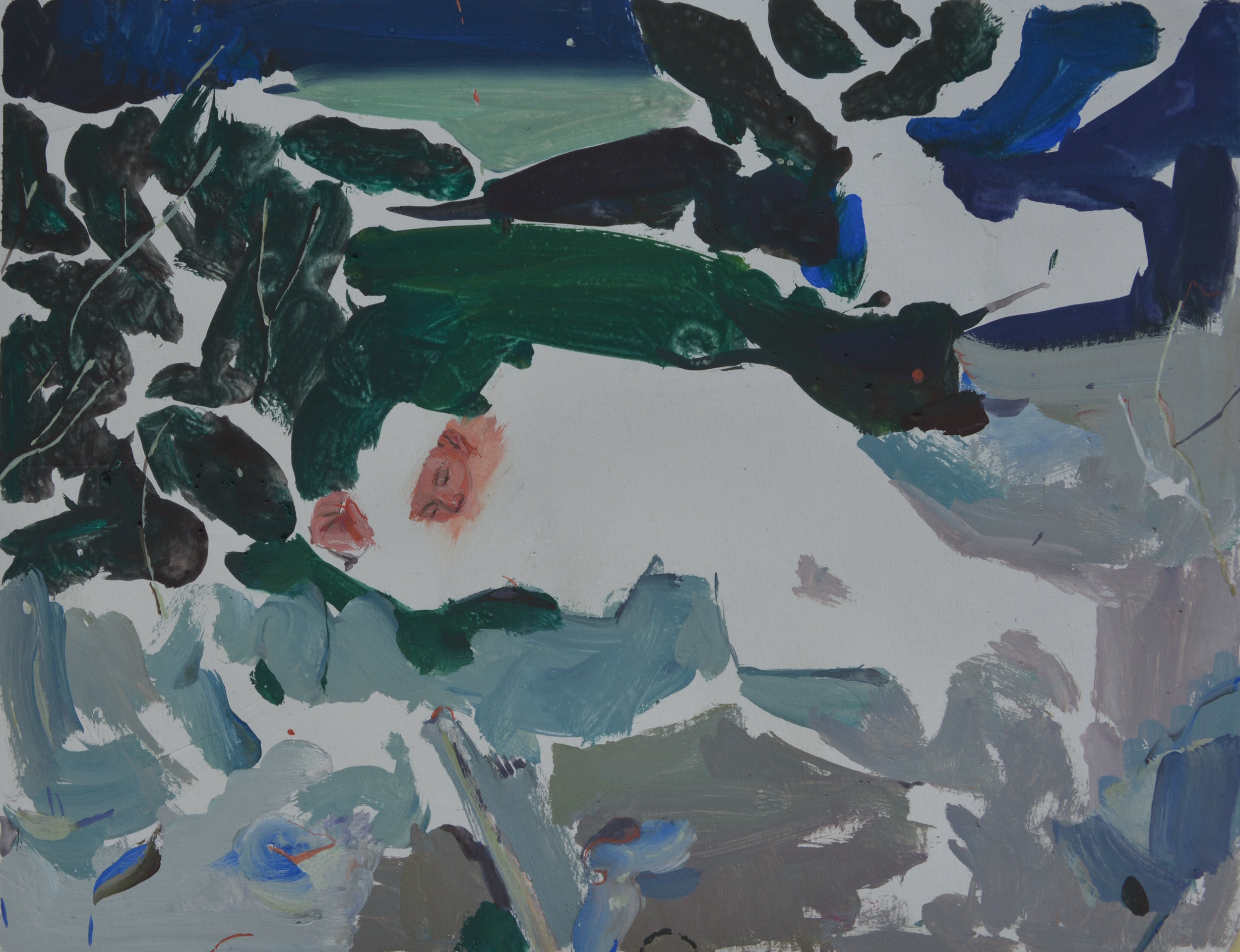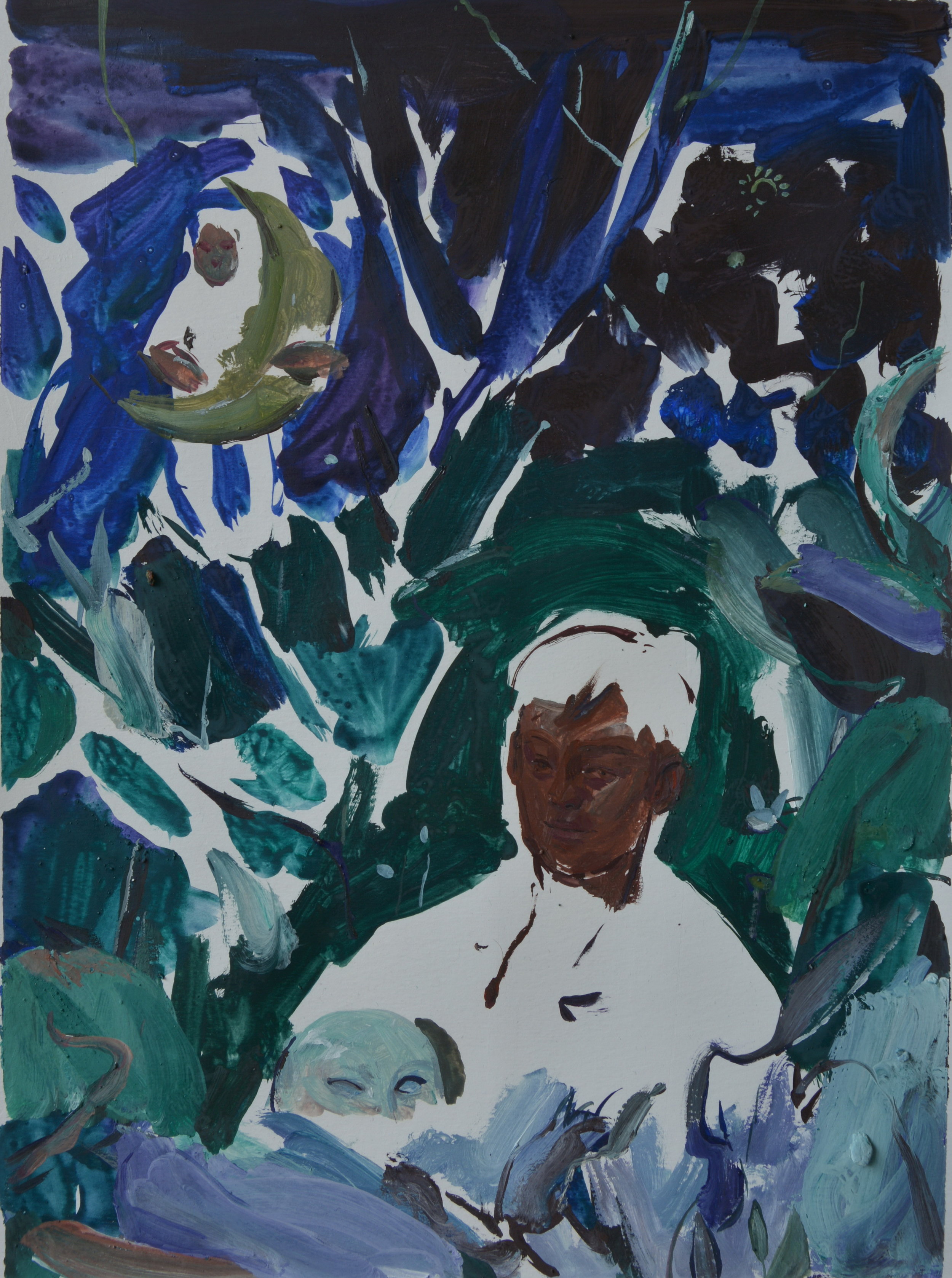July 31 - September 1
Opening Reception
Saturday August 3, 5-7pm
The Dedee Shattuck Gallery is pleased to present Transported: Works from Moldova and Transylvania, a group exhibition featuring paintings by Elena Bria, Radu Baies, Eugeniu Gorean, Misha Goro, Pavel Grosu, Sergiu Laslo, Mirela Moscu, Sergiu Toma; photography by Victoria Viprada; and sculptures by Valentina Beregovaia and Mihai Nutzu. Elena Bria, originally from Moldova and a graduate of the Imperial Academy of Arts in Saint Petersburg, Russia, has exhibited her paintings twice before at the Dedee Shattuck Gallery.
The country of Moldova and region of Transylvania (western Romania) have experienced multi-cultural histories—each place withstanding a long line of various occupations, rulers, cultural identities, official languages, and shifting borders. One result, captured by the young artists in this show, is a mixture of traditional craft within a contemporary art-making mindset. The paintings and sculptures cannot be read as purely figurative nor purely conceptual: the artists approach Realism by bending the rules of composition and style, piecing together imagery, collaging, employing various techniques of paint application, and simultaneously referencing a number of art movements in a single work. These artists seem to be describing many worlds and time-periods, many histories, capturing a surrealist montage of places between a foggy past and blurry future. The work — transported to us from the edge of the Black Sea — is somehow both anachronistic and timely.
Moldova, a landlocked country in southeastern Europe (west of Ukraine) was a part of Romania until 1940. Transylvania, the large, forested region in the northwestern part of Romania, is separated from the rest of the country by the Carpathian Mountains and Transylvanian Alps. Transylvania was a principality of the Ottoman Empire in the 16th century, then a part of Hungary, and finally incorporated into Romania in 1918.
Elena Bria
Biography
Elena Bria was born on July 4, 1992 in Chisinau, Moldova to a family of biathlonists.
At age eleven, she began her studies at the School of Fine Arts in Chisinau. There she met her mentor, Master Stanislav Babiuc, who trained her in the basic principals of realist painting in the traditions of the old Russian school.
After graduating the School of Fine Arts, she successfully passed her entry exams and continued her studies at the Imperial Academy of Art in Saint-Petersburg. In Bria's words, she "believes that the eternal teacher for an artist must be nature, because art is the sister of nature."
Elena is a figurative artist, painting exclusively from life . She is mainly inspired by such classical Russian artists as V. A. Serov, I. E. Repin, and N. Fechin; and European painters, John Singer Sargent, Anders Zorn, Joaquín Sorolla.
She has exhibited in Moldova and Russia. Her works are in private collections in Moldova, Russia, Taiwan, Romania, Italy, and North America. The Dedee Shattuck Gallery is the first gallery in the United States to exhibit her work.
Artist Statement
Art is the perfect way in which one can express their feelings towards the world. Nowadays, painting can be considered a type of science that studies the spiritual realm. From my point of view, the purpose of art, first and foremost, is to make people stop in their daily haze and break free from the superficial perception of their surroundings in order to be able to truly look at the portrait of a stranger and ask themselves "What were they thinking about in that moment? What were they feeling?" In this case, art appears as something that the artist has already analyzed and all that remains for viewers to do is to ask themselves the questions presented above. In day to day life, though, the point of art is to urge the viewer to analyze carefully the world that surrounds them, to really look at a fellow human being and to try to understand them on a deeper, more meaningful level. Perhaps, this way people will start to appreciate one another and the relationships that form between them, ultimately giving up violence in order to form a more loving and pleasant environment.
Eugeniu Gorean
Biography
Eugen Gorean was born in Chisinau, Republic of Moldova in 1991. Having grown up both next to a farm and in close proximity to the capital his love of the outdoors and nature grew tremendously. Throughout his life, Eugen has always been fascinated by animals and their role in human’s life. Naturally, he was drawn to watercolor. The interest was cultivated during his teenage years and further developed at the Academy of Fine Arts in his hometown where he learned the bases of the Russian Academic traditions.
After completing his studies, Eugen delved even more into his watercolor practice, which involved personal and group exhibitions, contests, watercolor biennales and workshops. His art is a realistic representation of quite ordinary animals. The images contain symbolism referencing philosophical, social and ecological subject matter. The animals are not a still life, nor a depiction of a dead animal as seen in the works of Renaissance. They are depicted absolutely independently-just as they are but as well as a representation of the consequences of genetic changes, chemical abuse and the diseases of the 21stcentury. It is collaboration between the artist and the society of consumption. Eugen cherishes the connection with nature and tries to show theconsequences of globalization through the characters of different animals who suffer from human apathy. He feels that the artistic exchange between the animal and the artist opens up many opportunities to change the vision of the world.
In 2016 he was invited to exhibit his paintings in the European Parliament in Brussels, and only a year later he exhibited inside the European Commission in Strasbourg.
In 2013, and 2018 Eugen won the First Prize in the International Watercolor Salon of Uchange, France. His animal series has been exhibited in London as well as in Guernsey. In 2018 he was selected as Canson Brand Ambassador.
Eugen has also trained as a teacher, specializing in workshops all over the world. He teaches amateurs and students of all ages in order to help them foster the same enthusiasm that he has for watercolor.
Eugen lives and works in Chisinau,but travels the whole world with watercolor workshops in the most important capitals of Europe,Asia and U.S.A.
Artist Statement
World holds the beautiful, for the artist who has the insight to extract it. All my paintings demonstrate appreciation of fine detail, bright-vivid colors and capture the structure and the texture of a wide range of landscapes , animals and cityscapes. The atmospheric impressionism that characterize my work makes the center of the composition “the light". The same light that covers cities, villages and all nature, can be treated differently. The same light can make you feel sad or happy depending on your inner feeling. Having a “feeling” in my work is what I appreciate the most when the painting is finished.
My art is an impressionistic representation of quite ordinary sceneries but covered by that “feeling” that characterize the beauty and the light seen through my eyes. The images contain symbolism referencing philosophical, social and ecological subject matter.
The paintings are under painted and then plotted with wide brushstrokes, while individual details are executed with a great variety of tones and delicate brushwork. With a beautiful watercolor technique that I developed through years I bring out a new impact on old topics and genres.
Mihai Nutzu
Mirela Moscu
Biography
Mirela Moscu was born in Sibiu, Romania and completed her Master’s degree in 2010 at the Univeristy of Art and Design in Cluj-Napoca in the Painting Department.
She took part in workshops and various group exhibitions in Spain, Belgium, Romania, Italy and U.K and last year at Jahn und Jahn Gallery in Munich, Germany. She has had solo shows in Cluj-Napoca and in 2018 in London, U.K at Frameless Gallery. In 2014 she was a finalist at Gilchrist Fisher Award.
Artist Statement
I work primarily with oil on canvas, but a few years ago I started using gouache on paper as a way of practicing small scale quick-dry painting.
My training is quite traditional. At art university we were encouraged to work in a more realistic way, not just by depicting the human form or objects we had in front of us to study but to also use photographs and collages that we made, sometimes trying to replicate that on canvas. After I finished my Masters, I used the same method but soon after, I realized that it didn’t make sense to me and that I had to find a different way of working. I started drawing things that I saw, imagined, remembered and tried to find a common thread. Because I don’t use photographs as visual references for my paintings, the works on paper became the sketches I use as guidance and the starting point for a painting. The gouache on paper works emerged as a need for color, a way to put those ideas in paint in a small and less expensive way. The constant practice led to the appearance of repetitive patterns, particularly vegetal motifs and flowers—maybe because I was surrounded by that having grown up in a village.
Misha Goro
Biography
Misha Goro was born in St. Petersburg, Russia and earned a B.A. in architecture. He came to the United States in 1993, where he received his M.F.A. in printmaking at the University of Illinois at Urbana-Champaign. He is now chair of Graphics Department at American Academy of Art in Chicago. Mr. Goro has won a number of prestigious international awards in Europe, Asia, and the United States. His work has been exhibited in over a hundred national and international shows and a part of multiple public and private collections.
Artist Statement
My story is a vivid illustration of the end of the last century – a time of deconstruction, discontinuity, and dislocation. My artistic practice is a continuous creative search for raw authenticity in urban environments and human forms that are constantly changing. Individuals change as they experience life and cities develop and/or decay through time. People and places have history and experience. Cities are weathered by time and through use, taking on a personality of their own from the people and the elements that have interacted with them. It is a combination of all of these factors that creates authenticity. Looking for subject matter I find simple things that we see every day, things that become symbolic once they are taken out of context. I experiment with the juxtaposition of places, faces, and architectural designs that reflect my diverse personal experiences.
Pavel Grosu
Artist Statement
(from Five Plus Art Gallery)
The artist discovers and re-contextualizes old family photos and interprets them in a visual manner similar to collage – in pictorial compositions. He established an identity trail that begins with the photographed image and uses elements from his daily universe. Looking for family photos in the places he was born (the Republic of Moldova) and finding out the story behind them, becomes a geographic journey to knowledge, integrating the past in the present and offering suggestions as to a possible future. Collage is one of the artist’s favorite techniques and serves both as a starting point in making painted compositions and in individual pieces. The visual trail created by Pavel outlines a possible identity, inviting the onlooker to take part in an intimate and very direct, almost confessional visual dialogue.
Radu Baies
Artist Statement
The subjects of my paintings: landscapes, objects and -more rarely- people, are all rooted in an archaic system; values which are slowly vanishing from the contemporary world. I’m interested in capturing something of the mystical atmosphere and iconic imagery of the traditional rural Romanian communities and making a visual dialogue with 16th century painting. Together, the essence of these worlds merge in grounds that evoke a desire for the metaphysical. From the hustle and bustle of contemporary life into the studied stillness of quiet spiritual contemplation.
Sergiu Laslo
Biography
Romanian contemporary artist born in 1993, currently living and working in Cluj-Napoca, Romania.
Artist Statement
(from the Sas Gallery)
Romanian artist Sergiu Laslo takes an unconventional approach to depicting the everyday. Inspired by his surroundings, be it passersby, pop culture, or old photographs, he creates a surreal montage of often overlooked and even unsettling imagery in his paintings. “I draw inspiration on what surrounds me, I see something and it gets stuck in my head. It may be something on the street or a scene in a movie or an old photograph. I take bits and pieces of what I see and I put them together into a collage made of peculiar characters. And I’ve noticed I seem to use purple in most of my work.’
Valentina Beregovaia
Biography
My name is Valentina. I was born in Moldova in 1989.
I am lucky enough to have had people in my life who completely changed my perception and discovered new facets of my creativity. When I was little, I was fascinated with my father’s workmanship. He painted a lot and carved wood skillfully. Although I couldn’t participate in this process, I was bewitched and marveled by it. I believe at this exact moment little Valentina decided to become an artist.
Later on, when I refused to take over the family business, I enrolled in the "Ion Creanga" State Pedagogical University. I received enormous support from my grandparents. They surrounded me with love and support which helped me to continue my path.
The next big step was my own ceramic studio. Every day my imagination becomes reality there.
Artist Statement
Being in contact with nature is of utmost importance to me and is my main source of inspiration. I constantly learn to notice new natural forms and transform them into my work. When creating a hollow object, first, an artist needs to understand its texture, to feel it. I usually find interesting textures in ordinary things – shells, branches, leaves. It can be dry plants, branches without leaves and flowers, stumps with visible growing stages, natural weaves and patterns. This is a cheat sheet for a sculptor.
Victoria Viprada
Biography
My name is Victoria Balaban ( Viprada). I am a photographer based in Chisinau, Moldova.
Although my first passion was computer programming, I was ambitious to explore visual media and invent my own alphabet of visual identity. Self-portrait became my starting point. One of these self- portraits won a prize in the Canon Contest in Saint Petersburg. After this success I decided that photography should be my career.
I focused on female portraits, and in 2 years I was awarded Grand Prix of the FestImage photo contest in Portugal. The large prize enabled me to open my own photo studio and develop my skills for fashion photography. While fashion and portraits were my main interests, I've since also indulged in Ballet Photography.
In 2016 I became Photographer of the Year by Instyle Magazine in Moldova. That award bolstered my confidence and led me to broaden my photographic interests. My most recent topic of interest has been color. The search of color is like a meditation, and the interpretation of color in my works allows me to release all of my accumulated sensations. My affection for color and all admiration for the impressionists have hugely contributed to the appearance of my last photo exhibition "Color Therapy".





















































